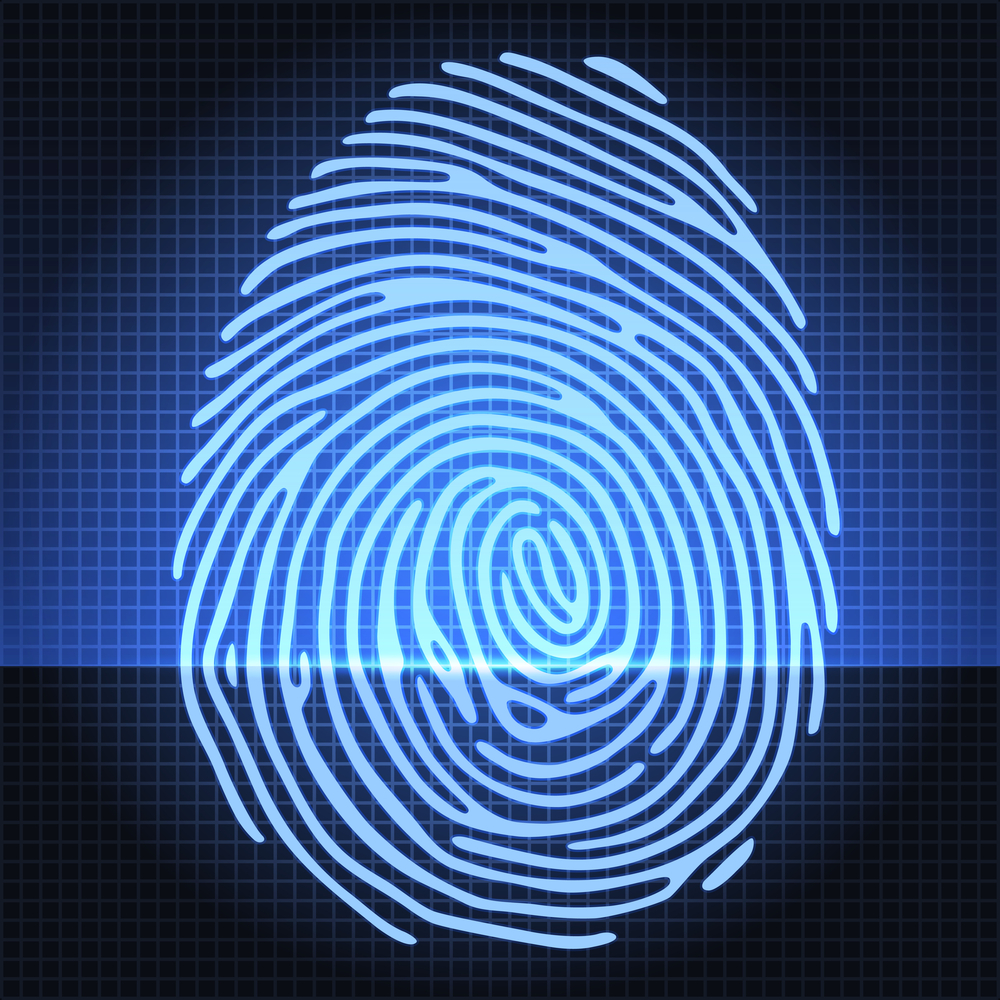Biometric technology has revolutionized the way we think about identity and security. The concept of "4 girls one fingerprint" may sound like a paradox, but it sheds light on the complexities of biometric identification systems. This intriguing phenomenon highlights the potential challenges and breakthroughs in fingerprint recognition technology, sparking debates about accuracy, privacy, and innovation. In this article, we will explore the science behind fingerprints, the implications of shared biometric data, and how advancements in technology are addressing these concerns.
From unlocking smartphones to securing high-level government facilities, fingerprints have become an integral part of modern identification systems. However, the idea that multiple individuals could share the same fingerprint pattern raises questions about the reliability of this technology. Understanding the nuances of biometric systems is crucial for both developers and users to ensure that these systems remain secure and efficient.
This article aims to provide a comprehensive analysis of the "4 girls one fingerprint" phenomenon, exploring the scientific principles behind fingerprint identification, potential real-world applications, and the ethical considerations surrounding biometric data. Whether you're a tech enthusiast, a researcher, or simply curious about the future of identity verification, this article will offer valuable insights and answers to your questions.
Read also:Michael Andrew Fox The Journey Of A Talented Actor And Musician
Table of Contents
- Introduction to Biometrics
- What is 4 Girls One Fingerprint?
- The Science of Fingerprints
- Biometric Technology Explained
- Challenges in Fingerprint Recognition
- Real-World Applications
- Privacy and Security Concerns
- Advancements in Biometric Systems
- Ethical Considerations
- Conclusion and Future Perspectives
Introduction to Biometrics
Biometrics refers to the measurement and analysis of unique physical or behavioral characteristics for identification purposes. Among the various types of biometric data, fingerprints have long been considered one of the most reliable and widely used methods. From crime scene investigations to mobile device authentication, fingerprint technology has proven to be both effective and convenient. However, the concept of "4 girls one fingerprint" challenges the conventional understanding of fingerprint uniqueness.
Biometric systems rely on the assumption that each individual's biometric data is distinct and unchangeable. While this assumption holds true in most cases, there are instances where similarities in biometric patterns can lead to false positives or mismatches. Understanding these limitations is essential for improving the accuracy and reliability of biometric systems.
What is 4 Girls One Fingerprint?
The phrase "4 girls one fingerprint" refers to a rare occurrence where four different individuals share identical or highly similar fingerprint patterns. This phenomenon was first documented in scientific studies and has since sparked discussions about the limitations of fingerprint-based identification systems. While the probability of such an occurrence is extremely low, it highlights the importance of considering alternative biometric markers for comprehensive identity verification.
Case Studies and Examples
- Research conducted by the National Institute of Standards and Technology (NIST) revealed instances where multiple individuals shared similar fingerprint patterns.
- Real-world examples of fingerprint mismatches have been reported in law enforcement and border security systems.
The Science of Fingerprints
Fingerprints are formed during fetal development and are influenced by genetic and environmental factors. The ridges and valleys on the surface of the skin create unique patterns that are used for identification. These patterns are classified into three main types: loops, whorls, and arches. While the general structure of fingerprints can be similar, the minutiae points—such as ridge endings and bifurcations—are what make each fingerprint unique.
Factors Influencing Fingerprint Formation
- Genetic inheritance plays a significant role in determining the overall pattern of fingerprints.
- Environmental factors, such as pressure and temperature during fetal development, can also affect fingerprint formation.
Biometric Technology Explained
Biometric technology involves the use of advanced algorithms and sensors to capture, analyze, and match biometric data. Fingerprint scanners, for example, use optical or capacitive sensors to capture the unique patterns on the surface of the skin. These patterns are then converted into digital templates that can be stored and compared for verification purposes.
Modern biometric systems employ multi-factor authentication to enhance security. For instance, combining fingerprint data with facial recognition or voice patterns can significantly reduce the risk of false positives or unauthorized access.
Read also:Comprehensive Guide To Nc State Id Renewal Everything You Need To Know
Challenges in Fingerprint Recognition
Despite its widespread adoption, fingerprint recognition systems face several challenges that can impact their accuracy and reliability. These challenges include:
- Fingerprint degradation: Over time, factors such as aging, injury, or environmental exposure can alter the appearance of fingerprints, making them harder to recognize.
- Similarity in patterns: As demonstrated by the "4 girls one fingerprint" phenomenon, some individuals may share highly similar fingerprint patterns, leading to potential mismatches.
- Technological limitations: Current fingerprint scanners may struggle to capture high-quality images in certain conditions, such as when the fingers are wet or dirty.
Real-World Applications
Fingerprint recognition technology has a wide range of applications across various industries. Some of the most prominent use cases include:
Law Enforcement
Fingerprints have been used in criminal investigations for over a century. Advanced fingerprint databases, such as the FBI's Integrated Automated Fingerprint Identification System (IAFIS), enable law enforcement agencies to quickly identify suspects and solve crimes.
Mobile Devices
Smartphones and tablets equipped with fingerprint sensors offer users a convenient and secure way to unlock their devices and access sensitive information. These sensors are designed to provide fast and accurate authentication while minimizing the risk of unauthorized access.
Privacy and Security Concerns
The growing reliance on biometric data for identity verification raises important privacy and security concerns. Unlike passwords or PINs, biometric data cannot be easily changed if compromised. This makes it crucial for organizations to implement robust security measures to protect biometric information from unauthorized access or misuse.
Best Practices for Biometric Data Security
- Encrypt biometric data during storage and transmission to prevent interception by malicious actors.
- Implement multi-factor authentication to reduce reliance on a single biometric marker.
- Regularly update and patch biometric systems to address vulnerabilities and emerging threats.
Advancements in Biometric Systems
Recent advancements in biometric technology have focused on improving accuracy, speed, and security. Innovations such as live fingerprint scanning, which captures 3D images of the skin's surface, and behavioral biometrics, which analyze patterns of movement and interaction, are paving the way for more reliable and user-friendly systems.
Additionally, the integration of artificial intelligence and machine learning algorithms has enhanced the ability of biometric systems to detect and adapt to changing conditions, reducing the likelihood of false positives and mismatches.
Ethical Considerations
As biometric technology becomes more prevalent, ethical considerations surrounding its use must be carefully examined. Issues such as consent, data ownership, and potential discrimination based on biometric characteristics need to be addressed to ensure that these systems are used responsibly and equitably.
Conclusion and Future Perspectives
The concept of "4 girls one fingerprint" highlights the complexities and challenges of biometric identification systems. While fingerprint technology remains one of the most reliable methods of identity verification, advancements in science and technology continue to push the boundaries of what is possible. By addressing the limitations and ethical concerns associated with biometric data, we can create systems that are both secure and respectful of individual rights.
We invite you to share your thoughts and experiences with biometric technology in the comments below. Additionally, feel free to explore other articles on our site to learn more about emerging trends and innovations in the field of identity verification. Together, we can shape the future of biometric systems and ensure that they serve the needs of society in a safe and responsible manner.
References:
- National Institute of Standards and Technology (NIST). (2022). Fingerprint Identification Systems.
- Federal Bureau of Investigation (FBI). (2023). Integrated Automated Fingerprint Identification System (IAFIS).
- World Privacy Forum. (2023). Biometric Data Privacy Best Practices.

